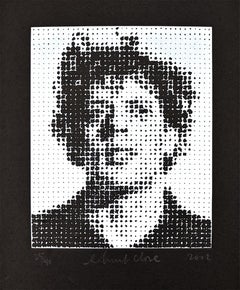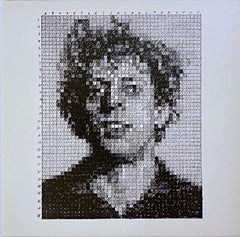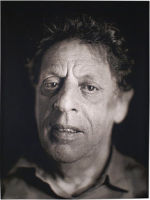Chuck Close Philip Glass
Early 2000s Contemporary Portrait Prints
Handmade Paper, Lithograph
1970s Realist Figurative Prints
Lithograph, Offset
Recent Sales
Early 2000s Italian Books
21st Century and Contemporary More Art
21st Century and Contemporary Photography
1970s Realist Figurative Prints
Offset, Lithograph
People Also Browsed
1960s Other Art Style Color Photography
Archival Pigment
1970s Abstract Geometric Abstract Prints
Screen
Vintage 1960s Mid-Century Modern Dining Room Tables
Marble, Chrome
1970s Expressionist Figurative Prints
Offset, Lithograph
Vintage 1970s French Mid-Century Modern Decorative Art
Porcelain
2010s Contemporary Drawings and Watercolor Paintings
Pastel
Vintage 1950s French Ceramics
Ceramic
1970s Minimalist Figurative Prints
Printer's Ink
Mid-20th Century Post-War Abstract Paintings
Ink, Gouache
1980s Modern Portrait Photography
Photographic Paper
2010s Contemporary Paintings
Canvas, Masonite, Oil
Vintage 1950s American Mid-Century Modern Games
Brass
Vintage 1970s Italian Modern Vases
Silver, Sterling Silver
2010s American Modern Pillows and Throws
Linen
1950s Art Deco Portrait Prints
Ceramic
1940s Modern Portrait Prints
Lithograph
Chuck Close for sale on 1stDibs
Chuck Close was renowned for his highly inventive techniques of painting the human face and was best known for his large-scale, photo-based portrait paintings.
After earning his MFA from Yale in 1964, Close took his place atop the American art world by creating large-scale, Photorealistic portraits that have creatively blurred the distinction between photography and painting. In 1988, Close was paralyzed following a rare spinal artery collapse; despite the physical limitations, the artist pressed forward with his work. With a brush taped to his wrist, he continued to paint.
In 2000, Close was presented with the prestigious National Medal of Arts by President Clinton and was appointed by President Obama to serve on the President’s Committee on the Arts and the Humanities.
"Yes, it is hard to paint blur," Close said. "There are some works I made by using a grid of string to help me perceive changes in depth of focus — something artists have done for centuries. The depth of field in the daguerreotypes is a function of the process of making an image that way, with a very short, very bright flash of light."
Although Close had employed various painterly styles throughout his career, he is perhaps best known for his grid set on the diagonal. Close’s paintings are all-over images where the background of the picture – the negative space – is as important as the face itself, and one cannot exist without the other.
Close often took his family and friends as models, making monumental and classical works that are bold in their simplicity. His work has been the subject of more than 200 solo exhibitions in more than 20 countries, including major retrospective exhibitions at New York's Museum of Modern Art, the Metropolitan Museum of Art, the State Hermitage Museum in St. Petersburg, the Museo Nacional Centro de Arte Reina Sofia de Madrid and the San Francisco Museum of Modern Art.
(Biography provided by Weng Contemporary – ArtXX AG)



